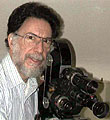|
|
This topic comprises 4 pages: 1 2 3 4
|
|
Author
|
Topic: Rectifier Diodes
|
|
|
|
|
|
|
|
|
|
|
|
|
Rick Long
Jedi Master Film Handler
Posts: 759
From: Toronto, Ontario, Canada
Registered: Nov 1999
|
 posted 07-31-2002 10:48 PM
posted 07-31-2002 10:48 PM




Diodes are like fuses - they're good until they ain't. Generally, when replacing them, go for the highest current and P.I.V. ratings you can get in the same case size. At Eaton's Centre, Toronto, I used to have a lot of problems with diodes blowing on the horrible little orange Irems, until I put small blowers on the top of them (blowing upwards). They were attached to the grill, just above the diodes. Where before, we were lucky if a diode lasted a year, after the fan installation, there were no rectifier calls until the theatre closed, six years later. Pitting, as you know, is a sign of insufficient current regulation. Might be time for a capacitor change too. Electrolytics do dry out over time.
| IP: Logged
|
|
|
|
Paul G. Thompson
The Weenie Man

Posts: 4718
From: Mount Vernon WA USA
Registered: Nov 2000
|
 posted 08-01-2002 12:10 AM
posted 08-01-2002 12:10 AM




I remember an IREM that blew a diode at the Keno Theatre in Kenosha, Wisconsin around the year of 1981. No diodes in my kit, and no replacements in the booth. I had a king-sized diode that I clamped on with a vise-grip pliers, and affixed a blower on the power supply. It kept the theatre from going dark until the next service call. In short, keep a full complement of diodes in the booth in case one gets blown. 
| IP: Logged
|
|
|
|
|
|
|
|
|
|
|
|
|
|
|
|
All times are Central (GMT -6:00)
|
This topic comprises 4 pages: 1 2 3 4
|
Powered by Infopop Corporation
UBB.classicTM
6.3.1.2
The Film-Tech Forums are designed for various members related to the cinema industry to express their opinions, viewpoints and testimonials on various products, services and events based upon speculation, personal knowledge and factual information through use, therefore all views represented here allow no liability upon the publishers of this web site and the owners of said views assume no liability for any ill will resulting from these postings. The posts made here are for educational as well as entertainment purposes and as such anyone viewing this portion of the website must accept these views as statements of the author of that opinion
and agrees to release the authors from any and all liability.
|

 Home
Home
 Products
Products
 Store
Store
 Forum
Forum
 Warehouse
Warehouse
 Contact Us
Contact Us




 Printer-friendly view of this topic
Printer-friendly view of this topic

















